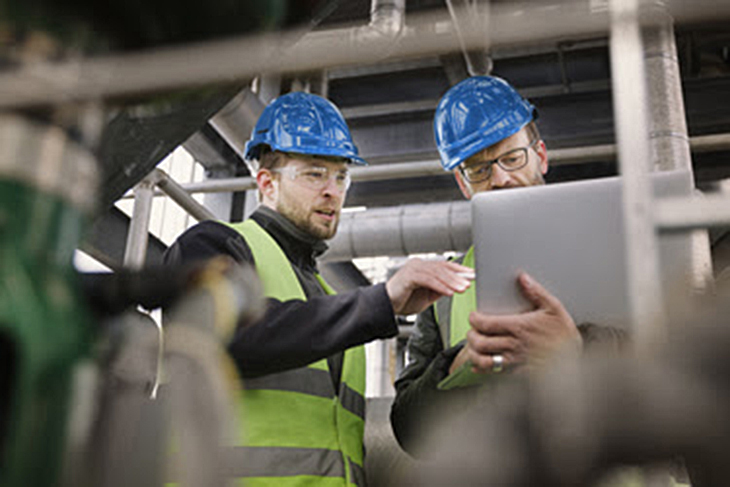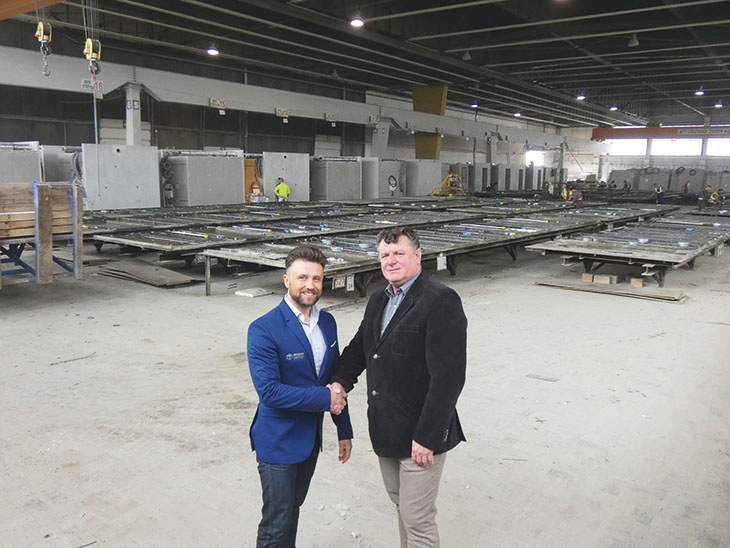Wondering how to streamline sanitizing in pharmaceutical manufacturing? You have several options worth exploring, from adopting new technologies and mindsets to redesigning the factory floor itself.
Automate Where You Can
Manual cleaning is no longer sufficient in the era of fast-moving viruses, demanding turnarounds and dense populations of workers. Manufacturers in this sector require efficient processes with consistent, error-free results.
Automated washers are a viable solution for keeping various manufacturing assets and parts clean, including reactors, tanks, vials, fermentation vats, freezer trays, packaging apparatus and much more. The advantages of automated cleaning include:
- Traceability: Automated cleaning machines keep complete records of every step as it carries out to help with documentation and compliance.
- Faster: It will outperform human labor almost every time.
- Cheaper: Automating cleaning across your pharmaceutical production lines saves money through reduced labor requirements, minimal training and more efficient use of resources.
One form of automation — collaborative robots or cobots — can perform even the most delicate procedures far more accurately than humans. Pharma manufacturers have previously hesitated to replace manual cleaning protocols with automated ones because of the finesse required to clean complex or delicate assembly components. Many automation products for clean-in-place or clean-out-of-place applications have now overcome this limitation.
Think Lean
The first step in streamlining sanitizing in pharmaceutical manufacturing is to consider a change of mindset. If you have not done so yet, it is time to apply lean philosophies to each workflow under your roof — including sanitation and sterilization.
The lean methodology encourages decision-makers to seek ways to generate more value while creating less waste and using fewer resources. What does this mean in sanitation in pharmaceutical manufacturing?
- Loss identification: Step one is to create a repeatable process to find and identify lost time and materials areas. For example, bottlenecks in the packaging department may be slowing operations elsewhere.
- Project prioritization: Streamlining sanitizing in pharmaceutical manufacturing requires a keen eye for impact analysis. The lean philosophy stresses prioritizing projects with the most significant potential impact. Use an effort/impact selection matrix to choose process improvements with the greatest positive transformative potential at a manageable cost. Refrain from seeking to reinvent processes that are already creating consistent value.
- Team assembly: As you seek process improvements in sanitizing and beyond, remember to create cross-disciplined teams of ideal size. Proponents of lean often recommend groups of three to seven individuals to carry out walkthroughs and identify improvement opportunities.
Understand Sterilization Shelf Lives
Anticipating shelf lives is one of the more straightforward tasks on this list to implement, but it is a critical one. To streamline sanitizing in pharmaceutical manufacturing, you need repeatable processes and must eliminate rework as much as possible. Some of the likely causes of rework include:
- Insufficient or inconsistent sanitizing techniques for manufacturing machines and components.
- Poorly documented cleaning procedures.
- Misunderstandings about how long sterilized components can safely be stored.
If it is done securely, sanitized components are safe if they are dry and the staff handles them as minimally as possible. Studies have found that autoclaved sterilized equipment can last 96 weeks when stored correctly. Now, picture a situation where employees are not documenting cleaning when they carry it out, are not storing components properly or have not kept track of how long sterilized instruments have been in storage.
Any one of these situations calls for re-sterilization for safety’s sake. Here and elsewhere, having organized workflows and documentation processes will make the process more efficient and less likely to waste materials or time.
Consult Manufacturers for Best Practices
Modern pharmaceutical manufacturing frequently employs delicate technologies like process analytical technology sensors. Sanitizing a stainless-steel mixing vessel is straightforward enough, but keeping advanced manufacturing environments clean — those with embedded IoT devices — often requires some outside assistance.
If you want an effective and streamlined sanitizing process, it is highly recommended to consult with the equipment manufacturer to find the best techniques. Not every substrate — like titanium, glass, ceramic or polymeric materials — is compatible with the cleaning agents or techniques your staff may apply to less-advanced manufacturing components. Do not risk equipment damage and business setbacks due to a lack of preparation or consultation.
Design the Facility for Streamlined Sanitation
Ultimately, only some work environments are ideally suited to pharmaceutical manufacturing. If you have the budget and design freedom, creating an environment that is easy to clean and does not offer a safe harbor for pathogens is essential. Here are some facility-design considerations to remember as you seek to streamline sanitation under your roof:
- Inspect: Seek out and eliminate dark corners or hard-to-reach pockets where dirt can accumulate or germs can reproduce.
- Design: Choose materials for the ceilings, walls, floors and work surfaces that are easy to wash and disinfect. The design should have few grooves, slots or pockets that invite contamination.
- Store: Equipment, tools, personal effects and all other items should have dedicated storage locations that do not hinder movement and cleaning efforts.
- Advance: It could be time to adopt more advanced cleaning technologies. Highly sensitive or frequently trafficked surfaces can automatically and effortlessly disinfect using UVC light.
- Dispose: Take special care when designing waste-disposal areas and the routes to and from such places. Workers should be able to carry out waste disposal without a high risk of cross-contamination and there should be dedicated areas to retrieve, store or throw away personal protective equipment.
These are just some of the considerations worth taking into account when it comes to facility design. You might be surprised by how much time and effort even small changes to layout, materials or traffic flow can save.
Streamlining Sanitizing in Pharmaceutical Manufacturing
Sanitizing in pharmaceutical manufacturing does not have to be a bottleneck for your plant. Take the above options into consideration to better understand your opportunities to improve and then choose the suitable materials, layout, processes and technologies to make it happen. Seek to build a culture of accountability and ownership and you may be delighted at how smooth process sanitation can be.

























